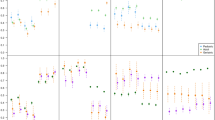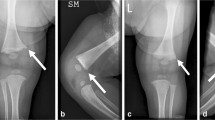Abstract
Mass casualty incidents (MCIs) create a large number of casualties in a short period of time. Diagnostic radiology plays an important role in major incident responses but is often underrepresented during major incident planning (MIP) and simulation. Surveys suggest radiologists are unfamiliar with their role during an MCI. We aimed to identify key topics for radiology MIP, familiarize radiologists with their role during an MCI and identify areas for future research. The terms “radiology” and “mass casualty incident” were entered into the advanced search builder on PubMed. Abstracts from this primary search were reviewed and papers selected for inclusion. Additional studies of interest were identified upon review of reference sections of relevant articles and from the related article tab on PubMed. MCI and trauma guidelines were reviewed. Key factors that caused issues during prior MCIs were identified including staff alert mechanisms, patient identification strategies, patient tracking, scan ordering and result communication. Limitations of local imaging resources and capacity should be identified and inform plans for the utilization of diagnostic radiology in the MCI setting. Simulation can help identify areas for improvement and familiarize staff with their roles. Further development of reliable MCI alert technology and patient identification strategies are needed as well as prospective validation of trauma CT selection criteria to identify patients who will benefit most from CT. Radiology should take part in MIP to address key issues encountered during prior MCIs and in MCI simulation to optimize major incident response.
Similar content being viewed by others
Abbreviations
- CT:
-
Computed tomography
- CISD:
-
Critical Incident Stress Debriefing
- ED:
-
Emergency department
- FAST:
-
Focused Assessment with Sonography for Trauma
- IT:
-
Information technology
- IMA:
-
Instant messaging mobile phone application
- MCI:
-
Mass casualty incident
- MAC:
-
Minimal accepted care
- MPR:
-
Multiplanar reconstruction
- NICE:
-
The National Institute for Health and Care Excellence
- PBRS:
-
Patient Barcode Registration Systems
- PACS:
-
Picture archiving and communication system
- RCR:
-
Royal College of Radiologists
- SMS:
-
Short Message System
- Surge capacity:
-
The ability of the radiology department or imaging modality to expand beyond the normal capacity to meet the increased demand for clinical care
- US:
-
Ultrasound
- USA:
-
United States of America
- UK:
-
United Kingdom
- WBCT:
-
Whole body computed tomography
- WHO:
-
World Health Organization
References
Berger FH, Körner M, Bernstein MP, Sodickson AD, Beenen LF, McLaughlin P, Kool DR, Bilow RM (2016) Emergency imaging after a mass casualty incident: role of the radiology department during training for and activation of a disaster management plan. Br J Radiol 89:20150984. https://doi.org/10.1259/bjr.20150984
Ben-Ishay O, Mitaritonno M, Catena F, Sartelli M, Ansaloni L, Kluger Y (2016) Mass casualty incidents - time to engage. World J Emerg Surg 11:8. https://doi.org/10.1186/s13017-016-0064-7
European Environment Agency (2010) Mapping the impacts of natural hazards and technological accidents in Europe. https://www.eea.europa.eu/publications/mapping-the-impacts-of-natural. Accessed 1 Jan 2019
Han W, Liang C, Jiang B et al (2016) Major natural disasters in China, 1985-2014: occurrence and damages. Int J Environ Res Public Health 13. https://doi.org/10.3390/ijerph13111118
Potin M, Sénéchaud C, Carsin H, Fauville JP, Fortin JL, Kuenzi W, Lupi G, Raffoul W, Schiestl C, Zuercher M, Yersin B, Berger MM (2010) Mass casualty incidents with multiple burn victims: rationale for a Swiss burn plan. Burns 36:741–750. https://doi.org/10.1016/J.BURNS.2009.12.003
Mohamed Shaluf I (2007) Disaster types. Disaster Prev Manag An Int J 16:704–717. https://doi.org/10.1108/09653560710837019
Christina Schori Liang, Khalid Koser, Cunningham AE, Anne Aly (2015) Measuring and understanding the impact of terrorism. http://economicsandpeace.org/wp-content/uploads/2015/11/Global-Terrorism-Index-2015.pdf. Accessed 15 Jan 2019
FBI (2014) A study of active shooter incidents in the United States between 2000 and 2013. https://www.fbi.gov/file-repository/active-shooter-study-2000-2013-1.pdf/view. Accessed 10 Feb 2019
Hare SS, Goddard I, Ward P, Naraghi A, Dick EA (2007) The radiological management of bomb blast injury. Clin Radiol 62:1–9. https://doi.org/10.1016/j.crad.2006.09.013
Raja AS, Propper BW, VandenBerg SL et al (2010) Imaging utilization during explosive multiple casualty incidents. J Trauma Inj Infect Crit Care 68:1421–1424. https://doi.org/10.1097/TA.0b013e3181cf7d32
Sosna J, Sella T, Shaham D, Shapira SC, Rivkind A, Bloom AI, Libson E (2005) Facing the new threats of terrorism: radiologists’ perspectives based on experience in Israel. Radiology 237:28–36. https://doi.org/10.1148/radiol.2371040585
Roberge E (2015) Damage control radiology. In: ASER Scientific Meeting , Miami, FL, USA. pp 1–43
Hirshberg A, Stein M, Walden R (1999) Surgical resource utilization in urban terrorist bombing: a computer simulation. J Trauma 47:545–550
Postma ILE, Beenen LFM, Bijlsma TS, Berger FH, Heetveld MJ, Bloemers FW, Goslings JC (2014) Radiological work-up after mass casualty incidents: are ATLS guidelines applicable? Eur Radiol 24:785–791. https://doi.org/10.1007/s00330-013-3072-y
Körner M, Geyer LL, Wirth S, Reiser MF, Linsenmaier U (2011) 64-MDCT in mass casualty incidents: volume image Reading boosts radiological workflow. Am J Roentgenol 197:W399–W404. https://doi.org/10.2214/AJR.10.5716
Körner M, Krötz M, Kanz K-G, Pfeifer KJ, Reiser M, Linsenmaier U (2006) Development of an accelerated MSCT protocol (Triage MSCT) for mass casualty incidents: comparison to MSCT for single-trauma patients. Emerg Radiol 12:203–209. https://doi.org/10.1007/s10140-006-0485-9
Quigley S (2011) Awareness of and preparation for a Major or Mass Casualty Incident across the London Trauma Network. Clin Radiol 66:S11. https://doi.org/10.1016/j.crad.2011.07.035
Powers R (2009) Evidence-based ED disaster planning. J Emerg Nurs 35:218–223. https://doi.org/10.1016/j.jen.2008.03.002
Körner M, Geyer LL, Wirth S, Meisel CD, Reiser MF, Linsenmaier U (2011) Analysis of responses of radiology personnel to a simulated mass casualty incident after the implementation of an automated alarm system in hospital emergency planning. Emerg Radiol 18:119–126. https://doi.org/10.1007/s10140-010-0922-7
WHO (2007) Mass Casualty Management Systems strategies and guidelines for building health sector capacity health action in crises injuries and violence prevention. https://www.who.int/hac/techguidance/tools/mcm_guidelines_en.pdf. Accessed 15 Jan 2019
Florida Department of Health (2012) Hospital medical surge planning for mass casualty incidents. https://www.urmc.rochester.edu/medialibraries/urmcmedia/flrtc/documents/wny-hospital-medical-surge-planning-for-mass-casualty-incidents.pdf.
Epstein RH, Ekbatani A, Kaplan J, Shechter R, Grunwald Z (2010) Development of a staff recall system for mass casualty incidents using cell phone text messaging. Anesth Analg 110:871–878. https://doi.org/10.1213/ANE.0b013e3181cb3f9e
Timler D, Bogusiak K, Kasielska-Trojan A, Neskoromna-Jędrzejczak A, Gałązkowski R, Szarpak Ł (2016) Short text messages (SMS) as an additional tool for notifying medical staff in case of a hospital mass casualty incident. Disaster Med Public Health Prep 10:38–41. https://doi.org/10.1017/dmp.2015.108
Wolbarst AB, Wiley AL, Nemhauser JB, et al (2010) Medical response to a major radiologic emergency: a primer for medical and public health practitioners 1. Centers Dis Control Prev Med Coll Wisconsin 254: . doi: https://doi.org/10.1148/radiol.09090330/-/DC1
Homier V, Hamad R, Larocque J et al (2018) A randomized trial comparing telephone tree, text messaging, and instant messaging app for emergency department staff recall for disaster response. Prehosp Disaster Med 33:471–477. https://doi.org/10.1017/S1049023X18000912
Brunner J, Rocha TC, Chudgar AA, Goralnick E, Havens JM, Raja AS, Sodickson A (2014) The Boston Marathon bombing: after-action review of the Brigham and Women’s Hospital emergency radiology response. Radiology 273:78–87. https://doi.org/10.1148/radiol.14140253
Landman A, Teich JM, Pruitt P, Moore SE, Theriault J, Dorisca E, Harris S, Crim H, Lurie N, Goralnick E (2015) The Boston Marathon bombings mass casualty incident: one emergency department’s information systems challenges and opportunities. Ann Emerg Med 66:51–59. https://doi.org/10.1016/J.ANNEMERGMED.2014.06.009
The Royal College of Radiologists (2015) Standards of practice and guidance for trauma radiology in severely injured patients, second edition. https://www.rcr.ac.uk/publication/standards-practice-and-guidance-trauma-radiology-severely-injured-patients-second. Accessed 18 Jan 2019
Bolster F, Linnau K, Mitchell S, Roberge E, Nguyen Q, Robinson J, Lehnert B, Gross J (2017) Emergency radiology and mass casualty incidents—report of a mass casualty incident at a level 1 trauma center. Emerg Radiol 24:47–53. https://doi.org/10.1007/s10140-016-1441-y
Haverkort JJM, Bouman JH, Wind JDD, Leenen LPH (2017) Continuous development of a major incident in-hospital victim tracking and tracing system, withstanding the challenges of time. Disaster Med Public Health Prep 11:244–250. https://doi.org/10.1017/dmp.2016.122
Bookman K, Zane R (2013) Expedited electronic entry: a new way to manage mass-casualty radiology order workflow. Prehosp Disaster Med 28:391–392. https://doi.org/10.1017/S1049023X13003488
Haddad MC, Khoury NJ, Hourani MH (2008) Radiology of terror injuries: the American University of Beirut Medical Center experience. Clin Imaging 32:83–87. https://doi.org/10.1016/j.clinimag.2007.09.007
Young VS, Eggesbø HB, Gaarder C, Næss PA, Enden T (2017) Radiology response in the emergency department during a mass casualty incident: a retrospective study of the two terrorist attacks on 22 July 2011 in Norway. Eur Radiol 27:2828–2834. https://doi.org/10.1007/s00330-016-4677-8
American College of Surgeons (2018) Student course manual ATLS ® Advanced Trauma Life Support ®. https://viaaerearcp.files.wordpress.com/2018/02/atls-2018.pdf. Accessed 20 Jan 2019
Kool DR, Blickman JG (2007) Advanced trauma life support. ABCDE from a radiological point of view. Emerg Radiol 14:135–141. https://doi.org/10.1007/s10140-007-0633-x
NICE (2016) Major trauma: assessment and initial management | Guidance and guidelines. https://www.nice.org.uk/guidance/ng39. Accessed 20 Jan 2019
Yeguiayan J-M, Yap A, Freysz M et al (2012) Impact of whole-body computed tomography on mortality and surgical management of severe blunt trauma. Crit Care 16:R101. https://doi.org/10.1186/cc11375
Huber-Wagner S, Lefering R, Qvick L-M et al (2009) Effect of whole-body CT during trauma resuscitation on survival: a retrospective, multicentre study. Lancet (London, England) 373:1455–1461. https://doi.org/10.1016/S0140-6736(09)60232-4
Sierink JC, Saltzherr TP, Beenen LFM, Russchen MJ, Luitse JS, Dijkgraaf MG, Goslings JC (2014) A case-matched series of immediate total-body CT scanning versus the standard radiological work-up in trauma patients. World J Surg 38:795–802. https://doi.org/10.1007/s00268-013-2310-4
Kimura A, Tanaka N (2013) Whole-body computed tomography is associated with decreased mortality in blunt trauma patients with moderate-to-severe consciousness disturbance. J Trauma Acute Care Surg 75:202–206. https://doi.org/10.1097/TA.0b013e3182905ef7
Sierink JC, Treskes K, Edwards MJR, Beuker BJ, den Hartog D, Hohmann J, Dijkgraaf MG, Luitse JS, Beenen LF, Hollmann MW, Goslings JC, REACT-2 study group (2016) Immediate total-body CT scanning versus conventional imaging and selective CT scanning in patients with severe trauma (REACT-2): a randomised controlled trial. Lancet 388:673–683. https://doi.org/10.1016/S0140-6736(16)30932-1
Davies RM, Scrimshire AB, Sweetman L et al (2016) A decision tool for whole-body CT in major trauma that safely reduces unnecessary scanning and associated radiation risks: an initial exploratory analysis. Injury 47:43–49. https://doi.org/10.1016/j.injury.2015.08.036
Mueck FG, Wirth K, Muggenthaler M, Kreimeier U, Geyer L, Kanz KG, Linsenmaier U, Wirth S (2016) Radiological mass casualty incident (MCI) workflow analysis: single-centre data of a mid-scale exercise. Br J Radiol 89:20150918. https://doi.org/10.1259/bjr.20150918
Sedlic A, Chingkoe CM, Tso DK, Galea-Soler S, Nicolaou S (2013) Rapid Imaging Protocol in Trauma: a whole-body dual-source CT scan. Emerg Radiol 20:401–408. https://doi.org/10.1007/s10140-013-1139-3
Nguyen D, Platon A, Shanmuganathan K et al (2009) Evaluation of a single-pass continuous whole-body 16-MDCT protocol for patients with polytrauma. Am J Roentgenol 192:3–10. https://doi.org/10.2214/AJR.07.3702
O′Keeffe M, Clark S, Khosa F et al (2016) Imaging protocols for trauma patients: trauma series, extended focused assessment with sonography for trauma, and selective and whole-body computed tomography. Semin Roentgenol 51:130–142. https://doi.org/10.1053/j.ro.2016.02.007
Tuckey MR, Scott JE (2014) Group critical incident stress debriefing with emergency services personnel: a randomized controlled trial. Anxiety Stress Coping 27:38–54. https://doi.org/10.1080/10615806.2013.809421
Author information
Authors and Affiliations
Contributions
Ryan JW: Performed literature review, primary author of the article
Murphy A: Critically revised the work
MacMahon PJ: Critically revised the work
Bolster F: Formulated the concept of article, critically revised the work
Corresponding author
Ethics declarations
Conflict of interest
The authors declare that they have no conflict of interest.
This article does not contain studies with human participants performed by any of the authors.
This was a review article of published literature; therefore, no informed consent was sought or obtained.
Additional information
Publisher’s note
Springer Nature remains neutral with regard to jurisdictional claims in published maps and institutional affiliations.
Rights and permissions
About this article
Cite this article
Ryan, J.W., Murphy, A., MacMahon, P.J. et al. Mass casualty incidents—are you ready? A major incident planning template for diagnostic radiology. Emerg Radiol 27, 321–328 (2020). https://doi.org/10.1007/s10140-020-01759-4
Received:
Accepted:
Published:
Issue Date:
DOI: https://doi.org/10.1007/s10140-020-01759-4




